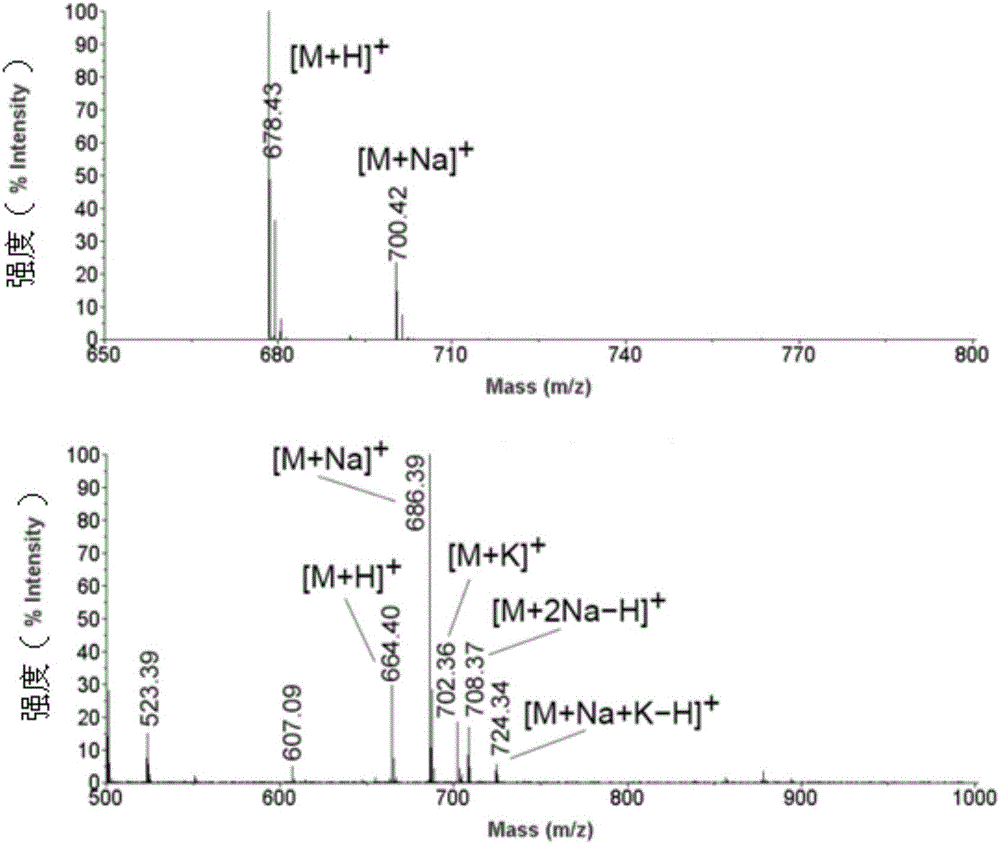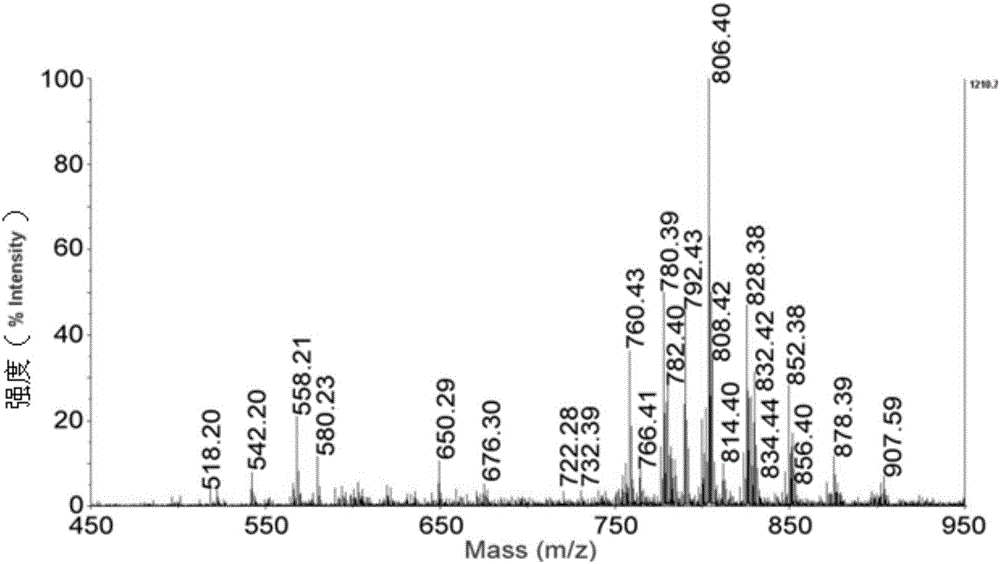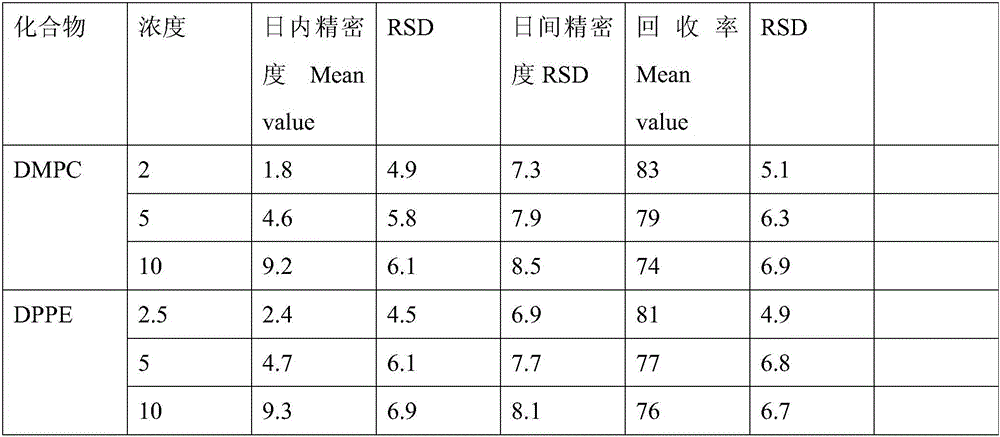Method for detecting lipid molecules in salmon
A detection method, salmon technology, applied in the direction of measuring devices, analysis materials, preparation of test samples, etc., can solve the problems of extracts containing more impurities, poor specific adsorption of phospholipids, time-consuming analysis, etc., to achieve simple training, Easy operation, strong qualitative and quantitative ability
- Summary
- Abstract
- Description
- Claims
- Application Information
AI Technical Summary
Problems solved by technology
Method used
Image
Examples
Embodiment 1
[0060] Embodiment 1, a kind of detection method of phospholipid molecule in salmon, carries out following steps successively:
[0061] 1), sample pretreatment
[0062] 1.0 g of salmon meat was washed and ground into mince as a homogenized salmon muscle tissue sample, put into a 5 mL centrifuge tube, added with 18 mL of chloroform / methanol mixture (1:2, v / v) and shaken to mix. Probe type ultrasonic (25kHz) ice bath extraction for 10 minutes, after completion, add 12.5mL pure water to the centrifuge tube and shake to mix. The mixture was centrifuged with a refrigerated centrifuge (ThermoScientific, USA) at 8000 rpm for 15 minutes at 4°C. After centrifugation, the solution in the centrifuge tube was separated up and down, and the salmon muscle tissue sample was in the middle of the two phases in a cake shape. Use a pipette gun to transfer the lower phase solution to another new pipette, continue to add 6 mL of chloroform to the upper phase and sample, and repeat the above operat...
PUM
 Login to View More
Login to View More Abstract
Description
Claims
Application Information
 Login to View More
Login to View More - R&D
- Intellectual Property
- Life Sciences
- Materials
- Tech Scout
- Unparalleled Data Quality
- Higher Quality Content
- 60% Fewer Hallucinations
Browse by: Latest US Patents, China's latest patents, Technical Efficacy Thesaurus, Application Domain, Technology Topic, Popular Technical Reports.
© 2025 PatSnap. All rights reserved.Legal|Privacy policy|Modern Slavery Act Transparency Statement|Sitemap|About US| Contact US: help@patsnap.com



